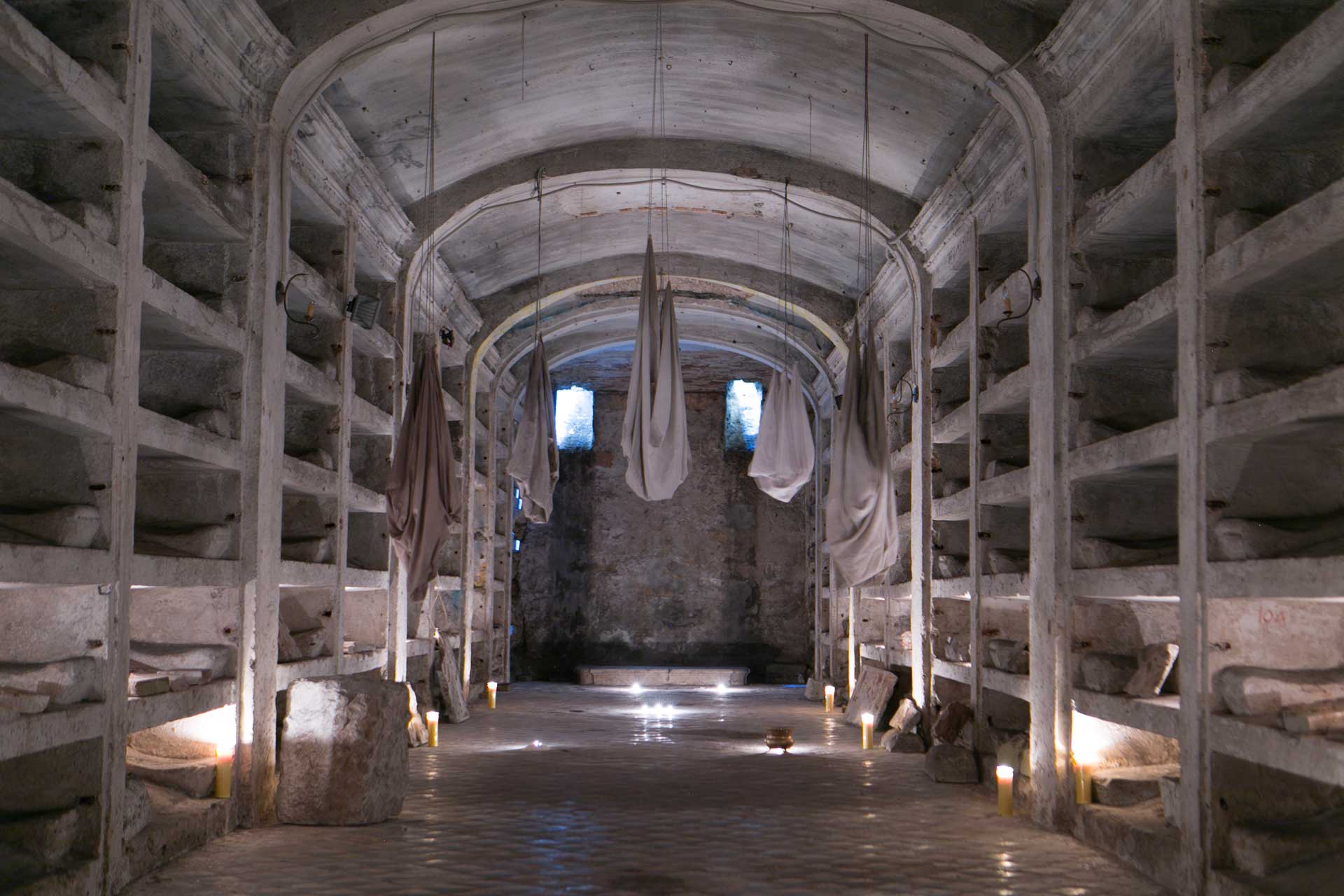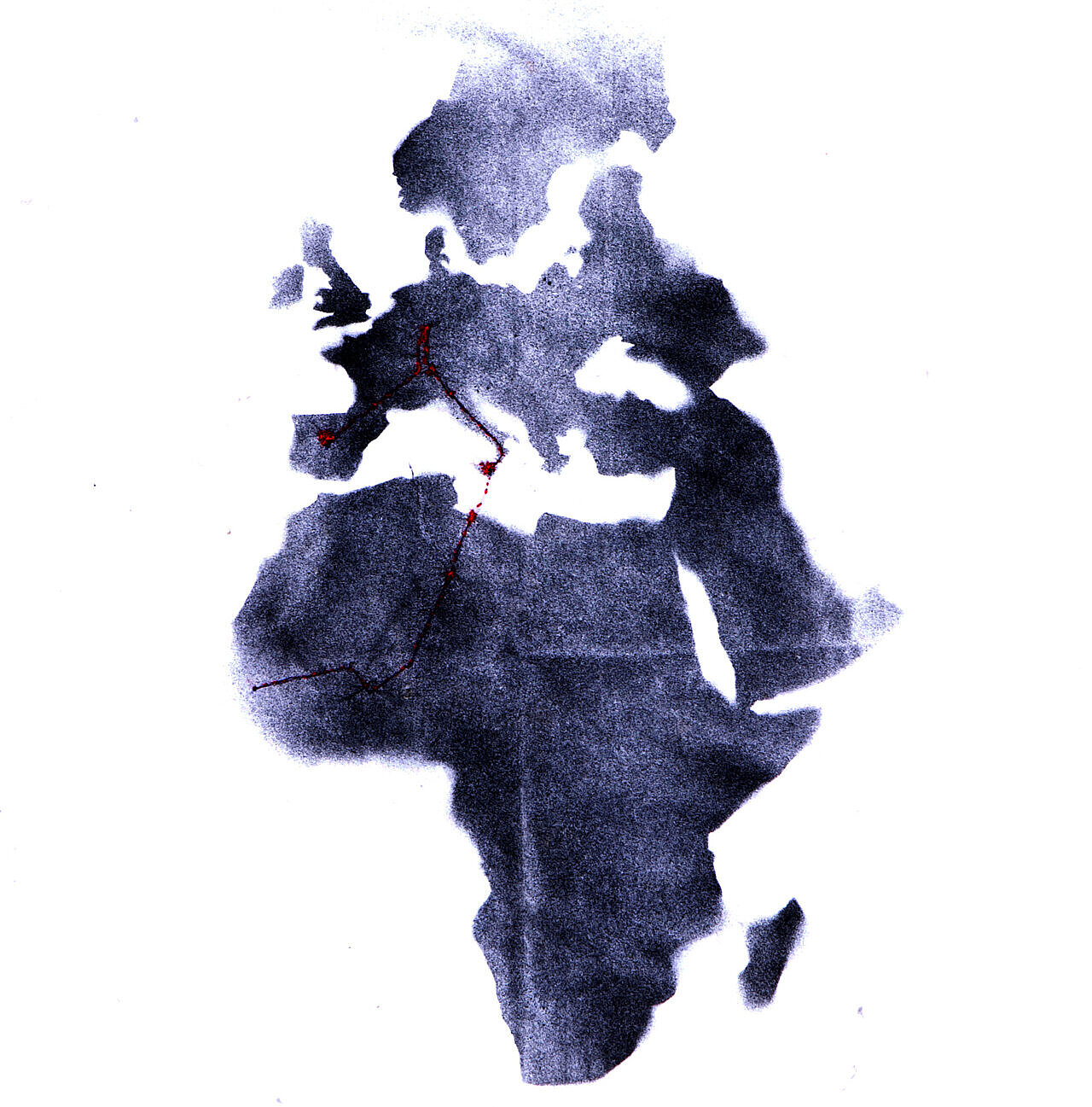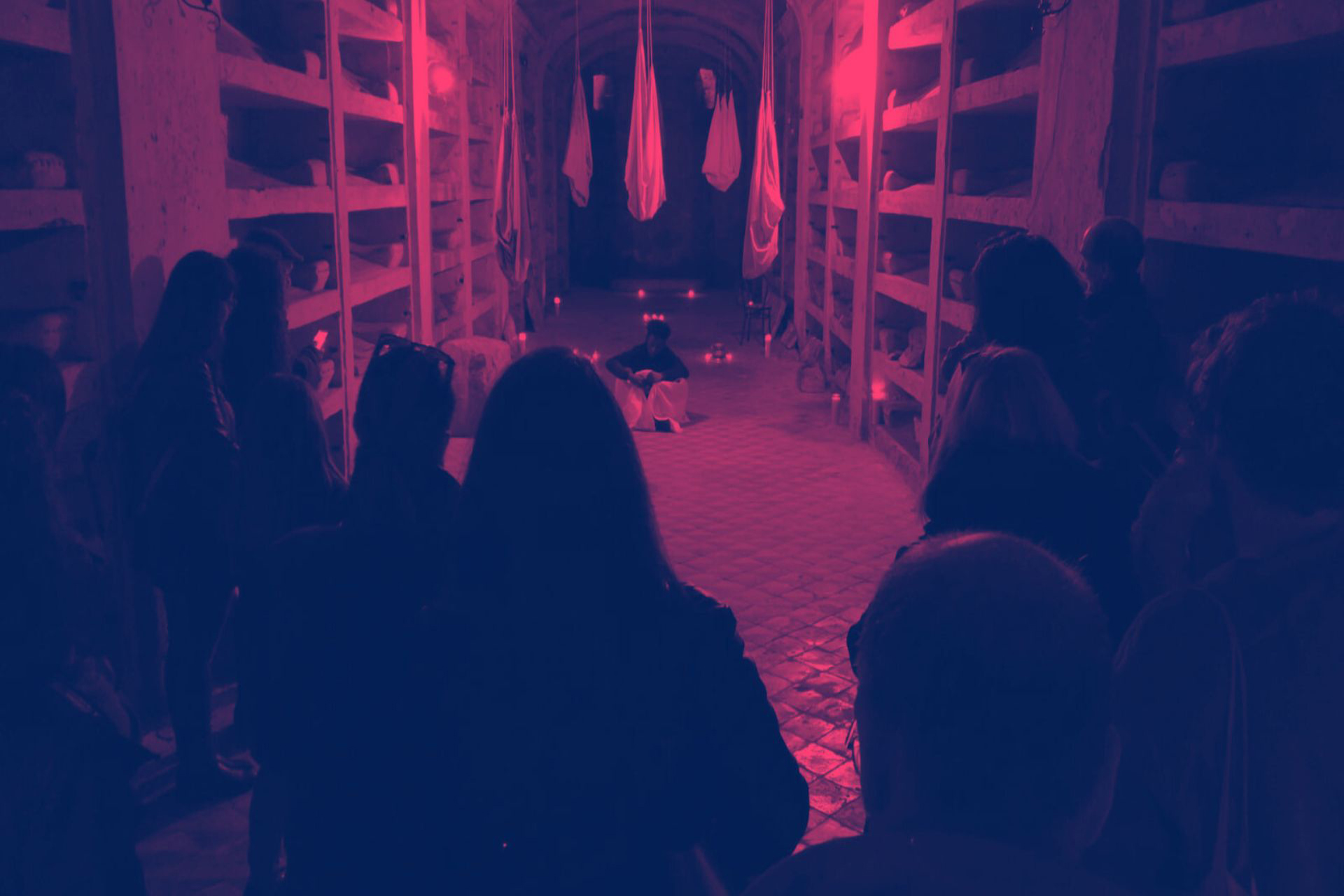On The Thread
-
TopicBorder
-
Year2020
-
Praxis
-
PlaceChiesa del Cassaro, Palermo (IT)
With this work, the artist enters a complex world that is culturally alien to his own experience; a precarious world without a future that faces daily, in addition to racism, the political and economic contradictions of those countries, such as Spain, Italy, and Greece, from which, in past times, a great many have had to emigrate in order to survive.
The Thread intrudes into the world of the manteros (“top-blankets”) to expose and make visible the harshness of the journey and the constant risk of those who dared to cross half the African continent and the Mediterranean Sea—always under dangerous and adverse conditions—only to find constant rejection and repression against their subsistence, always hanging by a thread. Manteros is the term used in Spain to refer to the illegal street trade that abounds especially in coastal cities or tourist centres.
They are generally sub-Saharan African migrants who display and sell their wares and objects—particularly counterfeit or imitation handbags or sunglasses, pirated CDs or DVDs—spread out on a blanket or sheet—hence their name—to facilitate the quick collection of the goods in case the police appear.
The task was not easy for the artist — not so much because he was dealing with an experience not his own as because of the difficulties involved in gaining the vendors’ trust and their willingness to participate in the project.
Addressing activities considered illegal by a system that does not provide the subjects with an alternative job, and that detains them in centres that are often subhuman, tends to raise suspicions of collaboration with police that hamper any engaging collaboration with supporters.
Despite these challenges, Nuuco managed to develop the project with them and bring it to completion, first in Madrid and then in Palermo, Sicily, one of the main entry points of African migration. The work is poetic and simple, like “arte povera”. Neither does he try to aestheticize the situation nor does he engage himself in varnishing the subject with distracting statements or labels.
On one side, we find the drawing of a map that outlines southern Europe and Africa in black, joined by a red thread that marks the path from Northwest Africa (perhaps Senegal) to Lampedusa. In a hallway, a mantero tacks together a sheet that will be used for his activities. And on either side, sets of sheets already prepared for street trading hang arbitrarily grouped together on the walls.
This work is not, therefore, about cultural appropriation but about passing the baton, showing solidarity, and giving visibility to a phenomenon that often hides from us, sometimes in plain sight.




